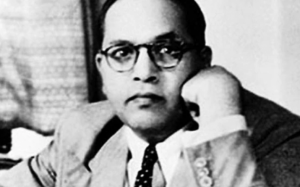
These are soul-trying times. Nearly all of us are trudging through some of the most difficult stuff of our lives, and most of us are acutely aware of the larger waves of suffering moving through our beloved planet right now: climate emergency, natural disasters, Gaza, Ukraine, and rising waves of fascism, to name just a few.
Given this context, I find it useful to return to a fundamental Dharma teaching: the Four Noble Truths. They are the basic teaching of Buddhism, and while there can be a lot of variation between traditions and lineages, you’ll always find the Four Noble Truths at the heart of any Dharma center or group.
For many of us this teaching is the first stop on our journey of learning about Buddhism, but it can easily slip into the background after that. It feels worthwhile to me to re-visit the Four Noble Truths and appreciate how they can help us to navigate our current realities. I am not an academic, so the rendering I offer here will be quite simple and personal.* Perhaps it will reawaken in you a desire to study and practice these truths. See: desire isn’t always “bad”!
Siddhartha Gautama, the Buddha, made it his mission in life to understand suffering: what it is, why we experience it, and how we can free ourselves from it. And he actually figured it out. His discoveries are summed up in these four truths.
1. There is suffering.
Well, this seems obvious. It’s inevitable that we will lose what we love and it’s inevitable that we will have to deal with things we don’t like. This is the essence of suffering. The Pali word that the Buddha used to describe this is dukkha (Skt: duhkha), which can also be translated as “dissatisfaction.” It’s that uncomfortable place where we are caught in the rub between what we want and what we can’t have.
Yet, although this is obvious, it’s amazing how much we try to escape this truth and how often our escape attempts actually generate more suffering. Take some time to consider this. You may be surprised by what you discover in your own life when you look at this dynamic. I know that I certainly was when I began to practice diligently. So step number one is to fully face the fact that there is indeed suffering, without sugarcoating that truth and without drowning in it.
Note that this does not mean that “life is suffering,” as the First Noble Truth is sometimes mistranslated and misunderstood. There is so much more to life than suffering. Thich Nhat Hanh once observed: “Life is filled with suffering, but it is also filled with many wonders, such as the blue sky, the sunshine, the eyes of a baby. To suffer is not enough.” (Parallax Press) That’s how I like to think of this truth to keep it in proper context.
2. The causes of suffering are craving and ignorance.
In the Second Noble Truth, the Buddha dives deeper to untangle this state of dukkha, this un-satisfactoriness. He noticed that our mind struggles with “things as they are” because we have a faulty belief in our “self” as separate from all others (ignorance), and a faulty belief that things should last when they always come to an end (craving). Because of this, we suffer. These root causes, in turn, are related to the three poisons: hatred, ignorance, and greed. There are a lot of lists in Buddhism! More can be said about this—there are entire books devoted to the subject—but for now we’ll stop here and move on to . . .
3. Freedom from suffering is possible.
Another simple truth, but oh so profound. There is a way out of this. And we can realize this way.
Do not underestimate the power of this Third Noble Truth. It changes everything. It carries hope and moves the teachings of the Buddha from being an interesting thought exercise to a heartfelt invitation to transform ourselves and our communities. If it changes everything, it also requires everything from us. As the first two truths showed us, we need to look deeply at the nature of our suffering: at the dynamic of craving and ignorance in our lives, and at how greed, hatred, and delusion manifest in us and in society. If we are willing to do all that, we can make the journey from dukkha to liberation.
From very early in my study of Buddhism, I remember something that Roshi Joan Halifax said: “Buddhism requires faith in only one thing: that awakening is possible.” This is what the Third Noble Truth is about. Have faith that we can wake up from suffering into a deeply compassionate connection with all beings—including ourselves.
4. The Noble Eightfold Path is the way out of suffering.
In the Fourth Noble Truth, the Buddha offers us the medicine that helps to bring an end to suffering: the Noble Eightfold Path. Think of this as a toolkit of interdependent practices that can untangle the knots of greed, ignorance, and hatred. Traditionally this toolkit is organized into three groups:
Moral Conduct / Sila
Right Speech: speaking in a way that cultivates clarity
Right Action: behaving in ways that maintain clarity
Right Livelihood: supporting oneself in a wholesome wayMental Discipline / Samadhi
Right Effort: cultivating skillful and peaceful mind habits
Right Mindfulness: cultivating alert, balanced attention
Right Concentration: cultivating a steady, focused, ease-filled mindWisdom / Prajna
Right Understanding: realizing the cause of suffering
Right Thought (Intention): motivation to end suffering**
The word “right” should be understood not in the sense of “correct” but rather as implying a thorough and complete understanding of something, which comes through consistent long-term practice. Sometimes the words “wise,” “wholesome,” or “perfect” are used instead of “right.”
The real power of the Noble Eightfold Path is that any one of these paths does not stand on its own. They require each other to be fully realized—it is the synergy that is most important.
Even as the Buddha provided us with an excellent map of the territory, this is not a one-size-fits-all approach. Each of us will find our unique way of living into these Four Noble Truths and the Noble Eightfold Path. It’s also important to notice that these truths apply not only to individuals, but also collectively. They can offer a path toward social transformation.
I’m curious to hear how the Four Noble Truths speak to you. What does this teaching offer you as a way to navigate through this time of suffering?
* For more perspectives, see Prof. David Dale Holmes’s 2021 article, “Understanding the Four Noble Truths and the Noble Eightfold Path (BDG) and Sister Ocean’s 2015 article, Is Life Suffering? The Four Noble Truths in Daily Life: Part One (BDG)
** With thanks to Sylvia Boorstein for the descriptions of each pathway.
See more
Being Peace (Parallax Press)
Related features from BDG
Grief and the Four Noble Truths
Three Awakenings and Four Noble Truths
The Good News of Suffering: Four Questions on the Four Noble Truths with Yongey Mingyur Rinpoche
The Path of Joy—The Four Noble Truths in Daily Life: Part Four
Four Noble Truths














